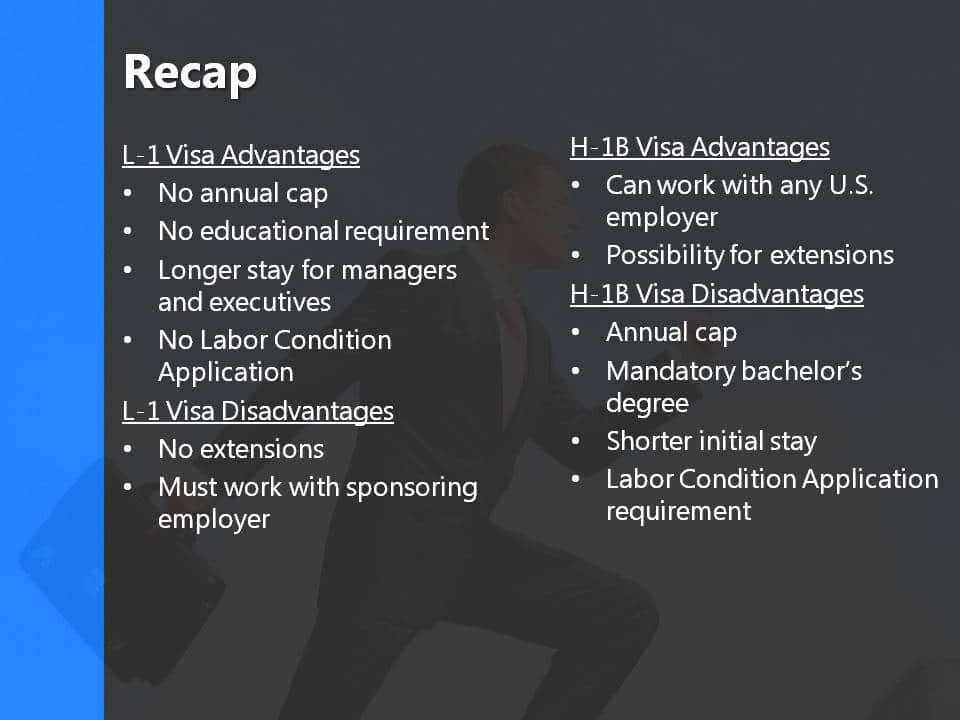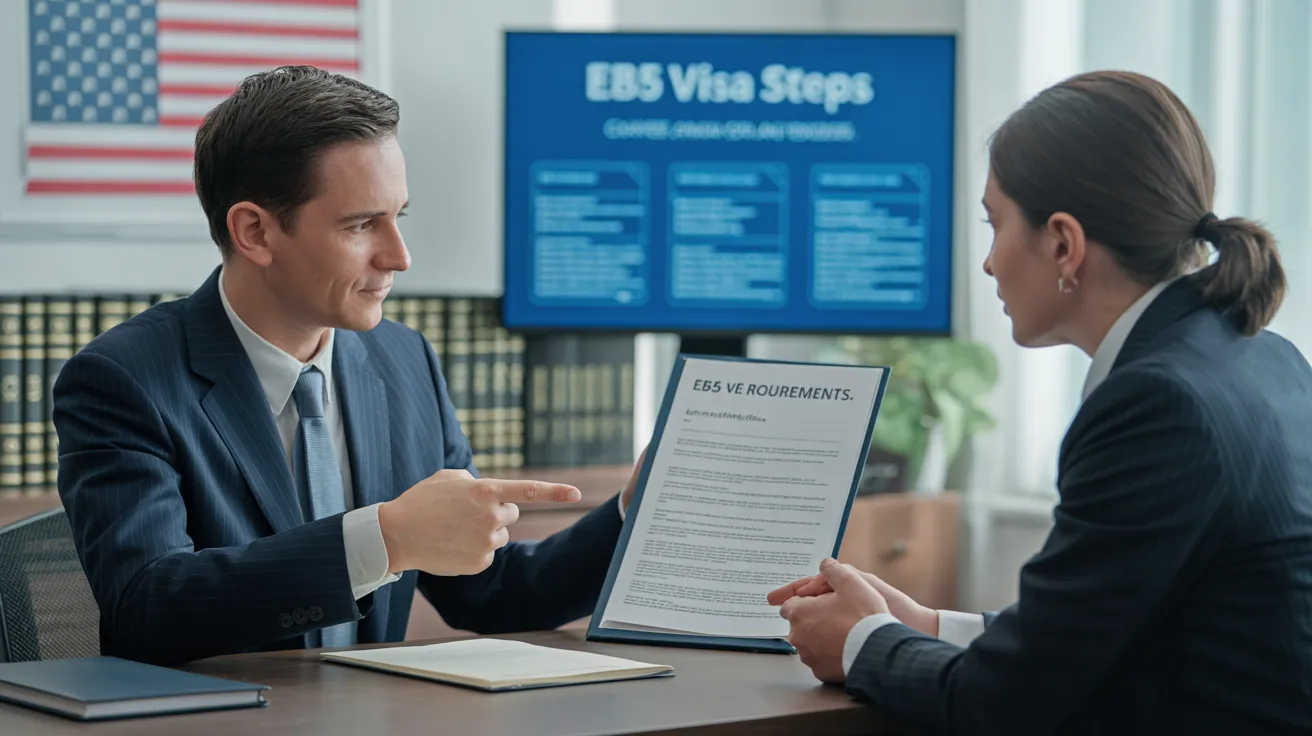Everything about L1 Visa
Table of ContentsThe Greatest Guide To L1 VisaNot known Facts About L1 VisaThe L1 Visa IdeasL1 Visa Fundamentals ExplainedFacts About L1 Visa UncoveredWhat Does L1 Visa Do?
Available from ProQuest Dissertations & Theses International; Social Science Costs Collection. (2074816399). (PDF). Congress. (PDF). DHS Office of the Inspector General. (PDF). (PDF). "Nonimmigrant Visa Stats". Fetched 2023-03-26. Division of Homeland Protection Office of the Assessor General, "Testimonial of Vulnerabilities and Potential Misuses of the L-1 Visa Program," "A Mainframe-Size Visa Loophole".
United State Department of State. Fetched 2023-02-08. Tamen, Joan Fleischer (August 10, 2013).
The Greatest Guide To L1 Visa
In order to be eligible for the L-1 visa, the international firm abroad where the Beneficiary was used and the United state business need to have a qualifying partnership at the time of the transfer. The different types of qualifying connections are: 1.
Company An owns 100% of the shares of Company B.Company A is the Parent and Firm B is a subsidiary. There is a qualifying connection between the two firms and Company B should be able to fund the Recipient.
Example 2: Business A is included in the U - L1 Visa.S. and intends to seek the Beneficiary. Company B is integrated in Indonesia and utilizes the Recipient. Firm An owns 40% of Firm B. The remaining 60% is had and regulated by Firm C, which has no connection to Firm A.Since Business A and B do not have a parent-subsidiary relationship, Firm A can not sponsor the Beneficiary for L-1.
Example 3: Business A is integrated in the U.S. and intends to request the Recipient. Business B is integrated in Indonesia and uses the Beneficiary. Company A has 40% of Business B. The continuing to be 60% is owned by Firm C, which has no relation to Firm A. However, Firm A, by formal contract, controls and full manages Firm B.Since Firm An owns much less than 50% of Company B however handles and manages the business, there is a certifying parent-subsidiary partnership and Business A can fund the Recipient for L-1.
Not known Incorrect Statements About L1 Visa
Affiliate: An associate is 1 of 2 subsidiaries thar are both owned and managed by the exact same parent or individual, or owned and managed L1 Visa process by the very same team of people, in essentially the same proportions. a. Example 1: Firm A is integrated in Ghana and uses the Beneficiary. Firm B is included in the U.S.
Firm C, likewise included in Ghana, owns 100% of Company A and 100% of Firm B.Therefore, Business A and Company B are "associates" or sister companies and a qualifying partnership exists in between both firms. Business B should be able to sponsor the Beneficiary. b. Instance 2: Company A is incorporated in the united state
Business A is 60% owned by Mrs. Smith, 20% possessed by Mr. Doe, and 20% owned by Ms. Brown. Company B is included in Colombia and currently utilizes the Recipient. Business B is 65% owned by Mrs. Smith, 15% possessed by Mr. Doe, and 20% possessed by Ms. Brown. Company A and Business B are associates and have a certifying relationship in 2 various means: Mrs.
The L-1 visa is an employment-based visa classification established by Congress in 1970, enabling international business to transfer their managers, execs, or essential workers to their U.S. operations. It is generally referred to as the intracompany transferee visa.

Furthermore, the recipient must have worked in a managerial, executive, or specialized staff member position for one year within the 3 years coming before the L-1A application in the foreign firm. For brand-new office applications, foreign employment should have remained in a supervisory or executive ability if the beneficiary is pertaining to the USA to function as a supervisor or executive.
A Biased View of L1 Visa

If provided for a united state company functional explore your L1 Visa for even more than one year, the preliminary L-1B visa is for approximately 3 years and can be expanded for an get started extra two years (L1 Visa). On the other hand, if the united state business is recently established or has actually been operational for less than one year, the preliminary L-1B visa is issued for one year, with extensions available in two-year increments
The L-1 visa is an employment-based visa category developed by Congress in 1970, permitting multinational companies to transfer their managers, executives, or essential workers to their U.S. procedures. It is frequently referred to as the intracompany transferee visa.
What Does L1 Visa Do?
Additionally, the recipient needs to have operated in a managerial, executive, or specialized employee placement for one year within the three years preceding the L-1A application in the international firm. For brand-new workplace applications, foreign work should have remained in a managerial or executive capability if the recipient is coming to the USA to work as a manager or exec.
for up to seven years to manage the operations of the united state affiliate as an executive or supervisor. If issued for an U.S. company that has actually been operational for greater than one year, the L-1A visa is originally granted for as much as three years and can be expanded in two-year increments.
If approved for an U.S. firm operational for greater than one year, the initial L-1B visa is for approximately 3 years and can be expanded for an added two years. On the other hand, if the U.S. firm is freshly developed or has actually been operational for less than one year, the initial L-1B visa is issued for one year, with extensions offered in two-year increments.